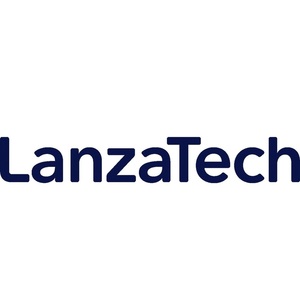LanzaTech: ‘Steelanol’ facility in Belgium produces ethanol

June 14, 2023
BY LanzaTech
ArcelorMittal and LanzaTech Global Inc. today announced the next step toward full operation of ArcelorMittal’s commercial flagship carbon capture and utilization (CCU) facility in Ghent, Belgium. The €200 million “Steelanol” facility is a first of its kind for the European steel industry, deploying technology developed by leading carbon utilization company LanzaTech.
This week saw new progress toward full operation of a commercial scale facility that will capture carbon-rich waste gases from steelmaking and biologically convert them into advanced ethanol through LanzaTech’s biobased process. Unlike traditional fermentation, the process ferments gases instead of sugars and uses a biocatalyst instead of yeast. The facility was inaugurated in December 2022, with cold commissioning taking place thereafter. The biocatalyst has now been introduced into the facility (a process called inoculation) to begin growth and verify production of new molecules.
In May 2023, the first gases from the steel mill’s blast furnace were safely introduced to LanzaTech’s biocatalyst. After a successful inoculation, initial samples that contained ethanol were produced this week, demonstrating that the carbon in the gases is being converted into new chemical products. Commercial-scale ethanol production from the bioreactors will follow, with expected ramp up of production in the coming months. This advanced ethanol can then be used as a building block to produce a variety of products, including sustainable transport fuels, packaging materials, apparel, and even cosmetic fragrances, hence helping to advance the decarbonization efforts of the global chemical sector. The ethanol will be jointly marketed by ArcelorMittal and LanzaTech under the Carbalyst brand name.
Advertisement
Advertisement
The Steelanol plant has the annual capacity to produce 80 million liters of advanced ethanol, around half of the total current demand in Belgium. It expects to reduce carbon emissions from the Ghent plant by 125,000 metric tons annually, thereby advancing the EU’s 2030 Climate Target Plan to reduce greenhouse gas emissions by 55 percent by the end of the decade. Project partners include Primetals Technologies and E4tech with support from CINEA, the European Climate, Infrastructure and Environment Executive Agency.
The product samples from the facility this week mark an important step toward the circular use of carbon and the end of single-use carbon, whereby gases are no longer regarded as waste but as raw materials. In addition, the recycling of carbon means Steelanol’s process of Carbalyst ethanol production does not compete in any way with food crops, as is the case for traditional methods of ethanol production.
“This is a momentous occasion. ArcelorMittal has long been a leader in decarbonization of the steel industry, and today we are delighted to announce the first product samples from the Steelanol plant,” said Jennifer Holmgren, CEO LanzaTech. “LanzaTech, ArcelorMittal, Primetals and E4Tech have worked together and have been supported by CINEA, to create a vision of a new circular carbon economy in Europe, displacing fossil carbon from the ground. To many people, using CCU to capture emissions to make everyday products seems like science fiction, but we have shown the world what is possible at industrial scale today.”
“ArcelorMittal has a passion for sustainability and circularity and has found the right partner in LanzaTech to realize that today. The beauty of the Steelanol facility is that we are enabling a new form of industrial symbiosis, connecting industries together by using gases from steel production as a feedstock for other sectors,” reflected Manfred Van Vlierberghe, CEO ArcelorMittal Belgium. “This is part of the Smart Carbon Strategy we are developing. By coming together and sharing these resources between sectors, we are not only furthering our circular, Smart Carbon mission, but also helping to solve climate, CO2 and waste challenges.”
Advertisement
Advertisement
The LanzaTech process implemented at this site is fully flexible: not only can it use industrial gases from today’s steel production methods but also it can adapt as industry transitions to future steel production technologies with increased green hydrogen input. This versatility enables the carbon recycling application to evolve with available residue, waste streams, and green H2. LanzaTech’s process is already employed by three operational commercial facilities, and LanzaTech anticipates the launch of two additional commercial facilities, in Asia, before the end of the year.
Funding for the commercial Steelanol facility was obtained from various sources, including the Flemish government, the Belgian federal government and the European Union’s Horizon 2020 research and innovation program under grant agreement No 656437. Part of the funding was also secured with a loan from the European Investment Bank.
The Steelanol facility is expected to reach full operational capacity before the end of the year.
Related Stories
The U.S. EPA on July 8 hosted virtual public hearing to gather input on the agency’s recently released proposed rule to set 2026 and 2027 RFS RVOs. Members of the biofuel industry were among those to offer testimony during the event.
President Trump on July 4 signed the “One Big Beautiful Bill Act.” The legislation extends and updates the 45Z credit and revives a tax credit benefiting small biodiesel producers but repeals several other bioenergy-related tax incentives.
FutureFuel idles biodiesel production amidst regulatory uncertainty, shifts full focus to specialty chemicals growth
FutureFuel Corp. on June 17 announced it will temporarily idle its biodiesel facility upon completion of its remaining contractual obligations, anticipated to occur by the end of June. The company is shifting its focus to specialty chemicals.
The U.S. EPA on June 18 announced 1.75 billion RINs were generated under the RFS in May, down from 2.07 billion that were generated during the same period of last year. Total RIN generation for the first five months of 2025 reached 9.06 billion.
TotalEnergies has announced the company expects its facilities will be able to produce more than half a million tons of SAF a year by 2028 to cover the increase in the European SAF blending mandate, set at 6% for 2030.
Upcoming Events










